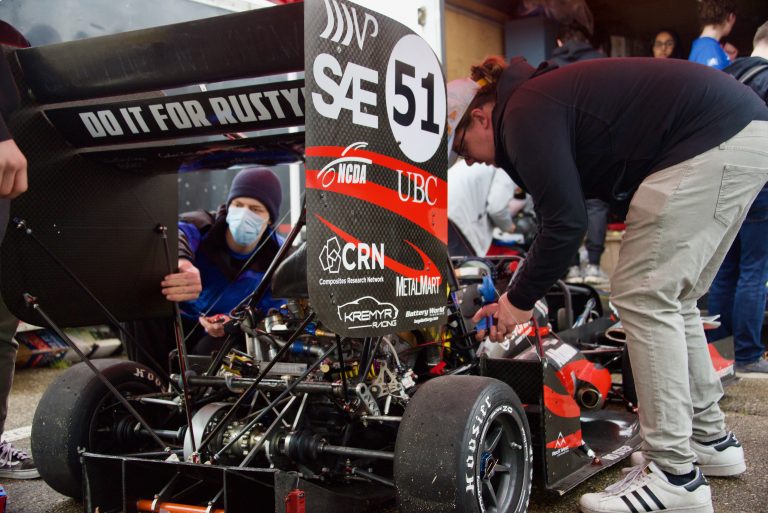
Founded in 1991, UBC Formula is a student organization that designs, builds, and races a Formula-style race car in the annual Formula SAE competition in Michigan. Each team member contributes their skills in a specialized area such as powertrain, chassis, suspension, electronics, controls, or dynamics. After 27 years of innovation and accomplishments, UBC Formula strives to continue its vision of helping students develop their engineering skills.
ECE has had the opportunity to interview the UBC Formula team! Keep reading to learn more about the team and their work!

What does your team do if you could sum it up in a few sentences? Give us your elevator pitch!
The purpose of design teams is to elevate students’ education by immersing them in a structured organization that resembles real life employment. Students have a large amount of freedom to apply concepts learned in class and take projects through the entire engineering design cycle.
Formula UBC designs, builds, tests, and races a new single-seat race car each year. The team participates in an annual student competition put on by the Society of Automotive Engineers. Every May, the team brings our car down to Michigan and competes against approximately 120 international teams. The competition is not solely focused on racing but rather takes a holistic approach to developing a race car. We are judged on a business presentation as well as the car cost, design, efficiency and a series of performance metrics including cornering ability, acceleration and drivability.
To place well in competition, Formula UBC Racing works year-round to prepare a car for competition. Approximately 60 members across 10 sub-teams use a variety of information sources to design a car, starting as early as June. Throughout the year, students take parts or entire subsystems through all the stages of design. It begins with problem definition and concept generation, simulations and iteration, manufacturing, and testing if applicable, before finally implementing the design.
What specifically are ECE students involved in on your team? In other words, what can an ECE student expect to be working on by joining the team/why would an ECE student want to join?
ECE students are involved in sensor integration, data acquisition, vehicle wiring harnesses, power distribution, and driver-controlled pneumatic systems like paddle shifting and opening/closing the rear wing for the Drag Reduction System (DRS). Anything from a tire temperature sensor to a brake light can be designed by students on the team. Integration into the vehicle and the design process for any individual part often requires inter-disciplinary team communication to make good design justifications like how to mount new parts in CAD so nothing interferes once the parts go on the car. ECE students can expect to learn about most of the electrical modules, sensors, and interconnecting harnessing on the car and in doing this they will be able to learn skills like making a wiring harness, implementing CAN bus communication, C- based STM32 microcontroller firmware, and PCB design in Altium. In addition to learning new skills, you will be in a student-led environment and surrounded by people who have similar interests so it’s a great place to make friends and have the opportunity to work on projects together.

Have there been any accomplishments that you and your team are most proud of? What are they?
Our team is very proud to have achieved 18th in the AutoX competition and 11th fastest in Acceleration. As of May this year, we are the fastest team in Canada. We are also proud to have placed in design finals last year in 2021.
How does being part of a student team enhance your experience at UBC and in the ECE department?
Being a part of a student team allows you the opportunity and budget to work on a complex project and learn skills that you may not get through your coursework. The team also teaches what good communication and leadership looks like, while building critical thinking skills when unexpected problems arise at the last minute. The student team has also provided a strong community to spend time with outside of work hours.
How can others join the team or get in touch with you if they are interested in learning more?
You can reach out to Formula UBC social media on Facebook, Instagram, or contact info on our website: formulaubc.com.